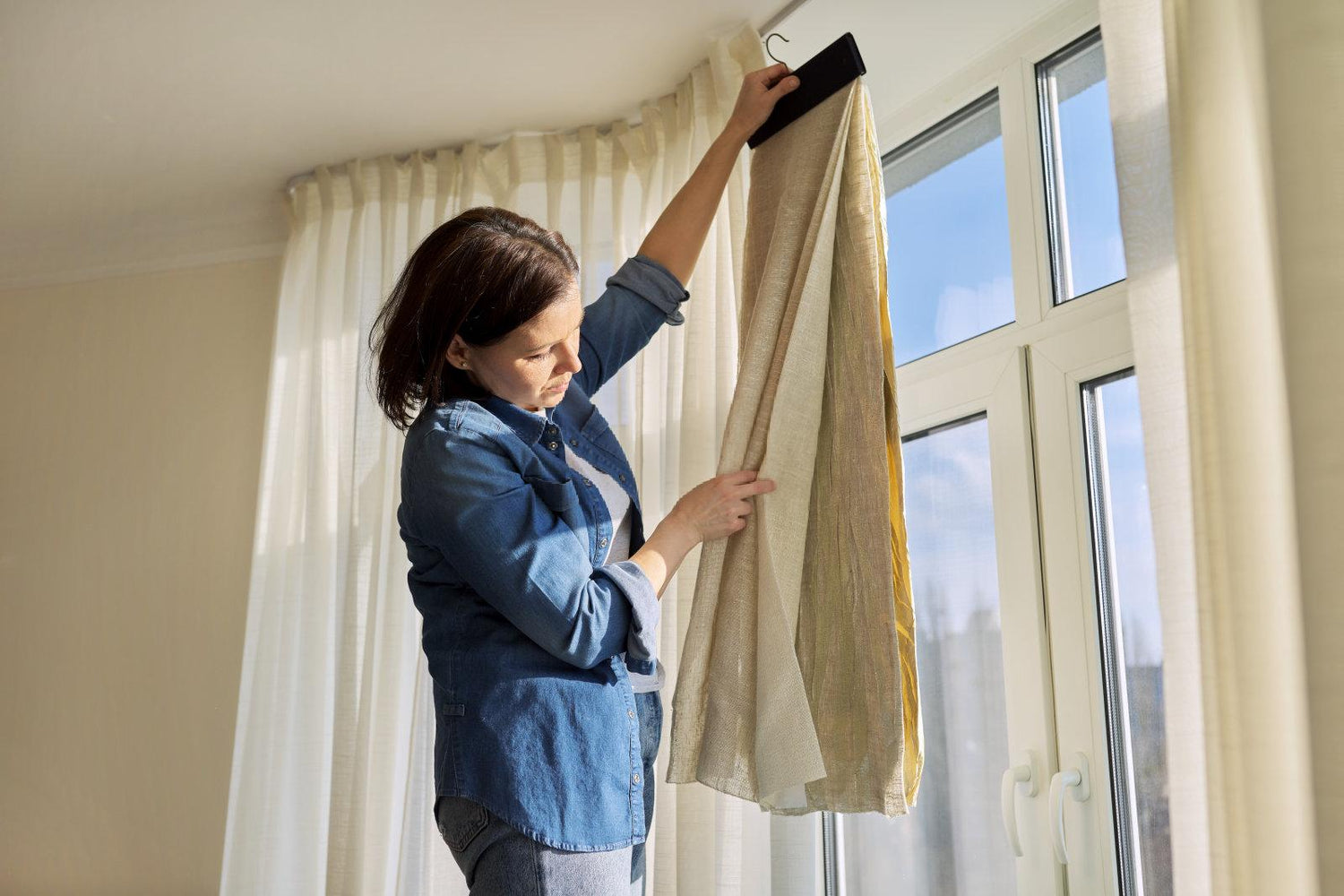The dust that clings to your curtains is a problem you can't ignore. While it might seem like a tedious task, taking the time now will save more work later on when investing in new window coverings or repairing damages from wear-and tear caused by pesky allergens like pollen and pet dander!
Keep reading for some helpful tips about keeping these important accessories clean so they stay beautiful longer than ever before - plus provide better insulation too thanks to their efforts preserving heat.
This article will give you all the inside information on what causes curtains to be so dusty, as well as how you can preserve them cleaner than ever.
Curtains are a great way to help your home stay clean and dust-free! Not only do they filter out dirt, but curtains also keep noise from getting in through the window. They're easy enough that you can vacuum them once per week with an upholstery attachment; just be sure not too push or pull any fabric when doing so - use light pressure instead as this will prevent wrinkles/creases (you don't want those!).
Wash cloth material every three months if possible because these fabrics absorb moisture faster than natural fibers would which means there'll always be dust, eventually over time.
Why Is My Room Getting So Dusty?
Dust consists of a variety of elements, including dead skin cells, pollen, cigarette smoke, and ash. This implies that the buildup of dust might be due to a variety of reasons, including:
High foot traffic. The more you spend time in a room, the dirtier it will become. Your activities add to this as we shed our skin cells and leave behind bits of ourselves that can stick around for awhile before being washed away by another round or two decades worth!
The windows in your bedroom should be closed when pollen counts are high, otherwise tiny particles of dust and debris will find their way inside. It is also dangerous to open the window during this time period because it could cause allergies or asthma- related problems for you!
The particles that make up smoke can be a problem for your house. Even more harmful are the effects of secondhand smoking, which contribute to dust and staining colors in homes over time.
Dander. Dander and shedding fur, like dust, can contribute to dust levels.
Improperly functioning HVAC systems can cause a whole host of issues, from retaining moisture to producing dust. This is because even the most filters aren't capable at catching all that's coming out with high humidity levels and this could result in severe problems for your home!
Incense and candles produce soot. The amount of dust in a space can be dramatically increased by burning them, but there are ways to decrease or eliminate this problem without using up all your time bothered about getting rid of your incense!
Why Does Dust End Up On Curtains?
The major reason why curtains attract dust is that they act as a trap for life's particles. They're surrounded by four walls, which means when we produce dirt or allow it in - getting out becomes much more difficult than just posting on social media about how clean your house feels! And since these materials can hold onto all types of grime- even if its small enough not to show up right away (like certain footprints), over time those little specks will accumulate until you have an entire layer worth removal before seeing anything different at first glance."
The cloud of air hanging around your home is really just a thin fabric curtain that needs to be cleaned. Curtains are suspended in mid-air and they look like an air filter because you can see through them when it comes down how much dust, cigarette butts etc., there actually was inside the room before!
Is Dust a Health Risk?
Dust is the perfect breeding ground for harmful insects like termites, which can cause extensive structural damage to our houses. They feed on dust - not only does this make their habitat dirty but it also poses risks that you may be exposed if there's too much of a good thing!
The inhalation risk goes beyond just protecting yourself against these pests; having excessive amounts in your house could lead some elderly people (or anyone really) towards lung disease because they're more susceptible than others when facing novelty triggers such as new textures or fragrances around every corner





Leave a comment
This site is protected by hCaptcha and the hCaptcha Privacy Policy and Terms of Service apply.